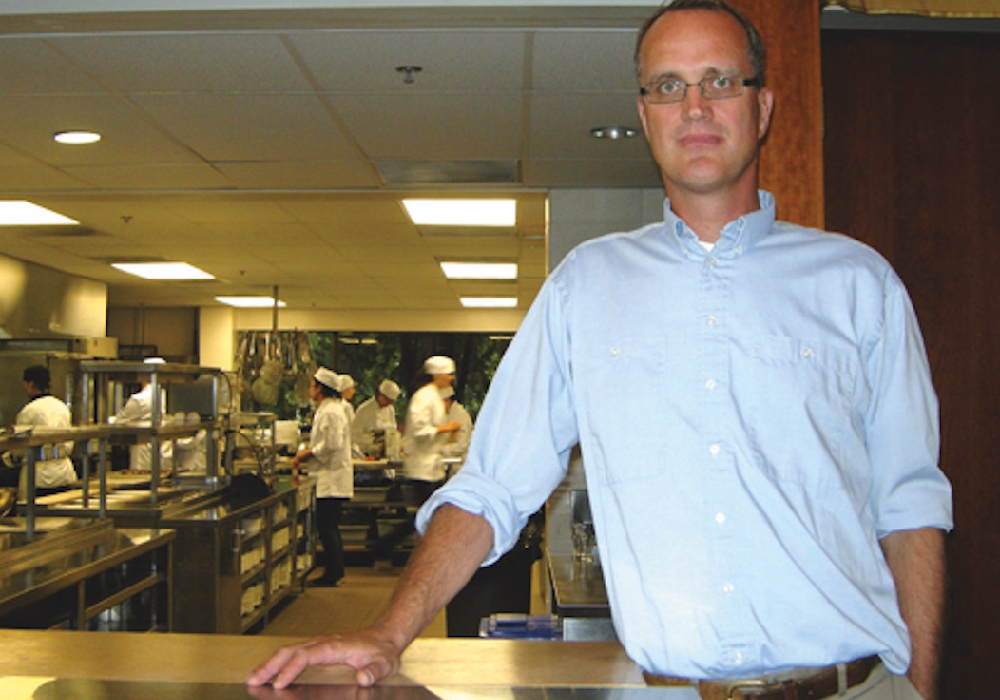Canada’s food supply chains have shown some “miraculous robustness,” according to a researcher at the University of Guelph.
Mike von Massow from the department of food, agricultural and resource economies at Ontario Agricultural College, made the comment during a video conference co-ordinated by the Arrell Food Institute and the Food from Thought research program at the University of Guelph.
“While we did see some shortages on shelves, I would argue those were demand-based shortages rather than supply-based shortages, and we’re continuing to see the system catch up and we’re continuing to see some stock at least come on to the shelves,” said von Massow. “While the system bent, it did not break.”
Read Also

Local farm businesses, groups look forward to Manitoba Ag Days 2026
Most of agriculture is seemingly at Manitoba Ag Days each January: Manitoba agribusinesses and farm groups look forward to connecting with farmers at the 2026 show.
That should create confidence in Canada’s food system despite some “pinch points” found as a result of COVID-19. He said the closures that took place at meat-packing facilities in Quebec and Alberta are an example of those weak spots.
“Processing really becomes that pinch point because the numbers are small,” he said.
There are only 20 federally inspected slaughter plants for cattle in Canada, and 27 for hogs.
“In the unfortunate circumstance where a farmer may get sick or have some sort of interruption, we have a large pool of farmers who will continue to supply. At the grocery level, most communities, although not all communities, have several store options,” said von Massow. “If we had trouble with one store we would continue to have access, but at the processing level we have considerably more concentration, and that’s where we might potentially run into issues.”
But he pointed to Canada’s highly integrated food system as a potential antidote to the small number of processors, suggesting that because “we’re not a Canada-centric beef system” the country can handle short-term, temporary shutdowns.
“Right now there is not a lot of concern around long-term loss of processing capacity, and we can work around it,” he said.
Von Massow said consumers can expect to see beef and livestock products stocked at their grocery stores, but producers could see negative consequences.
“As processing plants close it probably hurts producers more than it hurts consumers, because it’s much easier to reallocate processed products than it is to reallocate the raw products, so at least in the context of beef, we probably won’t be throwing beef out,” he said. “We might be feeding them at lower rates to allow them to sustain rather than grow in order to allow us to wait until that processing capacity comes back.”
He suggested a review of Canada’s food system after the pandemic to determine what needs to be changed.
While having a higher number of smaller processing plants may be one solution, von Massow said large plants exist because they are more efficient and able to keep costs lower – a factor that would perhaps be sacrificed in a world with more small processing facilities.
Lawrence Goodridge, who works in food science at the Ontario Agricultural College, said COVID-19 shows that Canada is still very much reactive, as opposed to proactive.
“This will allow the nation as a whole to really begin to have that critical discussion around, moving from reactive to proactive,” he said, adding it is the third coronavirus outbreak in 16 years and we will likely continue to see them again. “We really have to ask ourselves, how do we solve these bumps in the road?”
Goodridge pointed to how some measures are being taken now to combat the pandemic, such as the Canadian Food Inspection Agency (CFIA) working with provincial counterparts to ensure there are enough food inspectors.
“These are things that while useful now could certainly be adopted going forward in a proactive manner,” he said, adding it will better position the food system for future disruptions.
The panel also touched on how consumer behaviours could change as a result of the pandemic.
Jess Haines, who works for the University of Guelph’s Family Relations and Applied Nutrition, said more people now have time to cook their own food.
“That is a shift. We previously had families who just described themselves as too busy, ‘I don’t have time to come home and prep a big meal so I use prepared meals to feed my children’ – but now they have time,” she said, adding it will be interesting to see if this will spark a passion for cooking in some families.
“We know that when you prep meals at home, they are typically healthier than the foods you buy as prepared or are at restaurants, so it has some health implications and we’ll be interested to see if that’s sustained.”
Dana McCauley, director of New Venture Creation at the University of Guelph, said because of quarantine measures, many people are having to consider the “universal question” of “what am I going to eat today?” in a different way than before.
“This is engraining meal planning. We can only go to the grocery store once a week. In the last 10 years or so, we’ve been able to have that universal question of the day answered on a whim,” she said. “Whereas now, we can still get takeout but we’re having to plan still. So hopefully those types of behaviour will mean we do see more people doing more meal planning and cooking.”
McCauley is also recognizing a shift in the way people are shopping for their food.
“Long term, there is now no question that online grocery shopping is going to be part of the fabric of day-to-day urban life,” she said.
Von Massow pointed out there had only been slow growth in online food shopping prior to the pandemic, but there has since been a “rapid escalation” in groceries being delivered and “click and collect” shopping.
“Those of us who are still going to the grocery store are going less frequently,” he said. “Once every seven days as opposed to once every few days. That will change how we eat at home.”
















